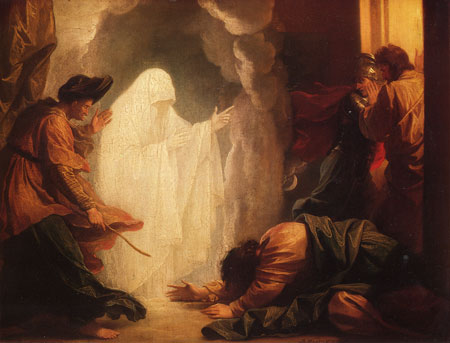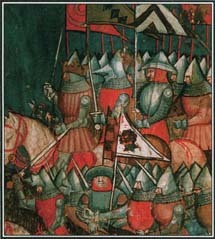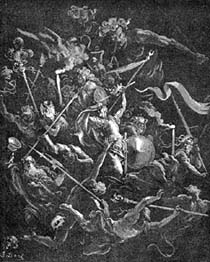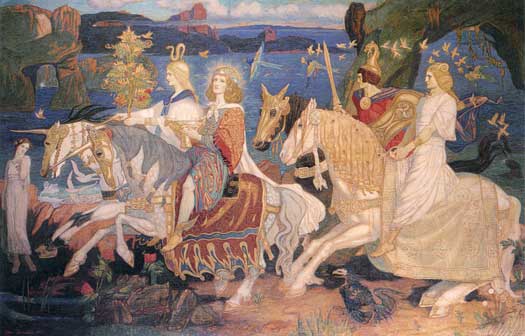Jack7
First Post
IV-Aa. Compact of the Basilegate
This is the compact or agreement which is signed by every character who wishes to serve in the Basilegate. Of course the requirements to be chosen are rigorous (they were looser in the beginning but became more standardized and more selective over time) and one cannot just join, one must be both sponsored and invited since the very existence of the group is unknown to most people, including most high representatives of the government, military, and church. No one, even the Team Members themselves are absolutely certain who knows of their existence and who does not, and whereas many people know of the group's existence as a Diplomatic Team, this is merely a cover for their far more secretive and covert activities.
There is no such Compact or agreement undertaken by members of other teams though the Hoshi has an oral agreement, the Oro does as well, and the Caerkara has a legal agreement but nothing really similar to the Compact, which details duties, careers, obligations, rewards, and future potential advancements.

Compact Of The Basilegate
By authority of the Emperor Nikephorus, Basileus of New Rome and the Roman Empire, it has been ordered that the Strategion, War Academy of Constantinople, create an official legation known as the Basilegate, the Imperial Legate, to be constituted in the year 805 Anno Domini.
This legation shall be charged with those official duties expressly demanded by Emperor Nicephorus and his representatives. These duties shall include, but are not limited to the following services; Work against the enemies of the empire, internal and external, the suppression of enemy raids and pirating activities, land and seas, the securing of lawless areas and the capture or elimination of criminals, action as official enquirers, action as emissaries and diplomats and as representatives of the Empire and King, and to render whatever other services are deemed fit and necessary by the Empire. That this legation shall swear allegiance to the Emperor and his servants and representatives and shall swear allegiance to the Church in order to serve the Empire as needed.
This legation shall by law and structure be attached to the Strategion and shall receive their orders from the War Academy and from those representatives of the Emperor placed in command of the legation.
The legation shall be initially equipped at Imperial expense, which shall provide arms and armor, and tack, tackle, and gear for their provision. All additional gear and equipment will be provided from War Franchise at reduced cost, as well as reduced cost for training and what additional supplies are as required for the execution of official duties. In addition such travel expenses as are accrued, either by land or by sea shall be compensated as long as those expenses are acquired by conduct of official assignment. Furthermore all additional expenses shall likewise be compensated, whether of travel or of board or equipment or supplies or of food and the legation shall be housed at imperial expense whenever they are stationed in Constantinople.
Whatever additional rewards accrue to the legation shall be theirs to keep and dispense with as they see fit, but the legation shall not be empowered to collect fees or levy taxes in the name of Empire, Emperor, or Church. They shall not levy taxes or fees of any kind while executing official duties but may keep rewards and payments they receive for additional services in the name of the empire as long as such additional services do not detract from or conflict with their primary duties and services.
This legation shall travel and execute their duties with the full approval and official support of Empire and Church, but shall remain a secret legation, unknown to the general populace and civil and military authorities, with the exception of those individuals and authorities who need to be aware of the nature of the legation. The legation will travel as needed in disguise. The legation shall be free to act as necessary to execute their duties and are fully empowered to take whatever actions necessary to execute their duties as long as such actions do not imperil the sacred honor of Emperor, Empire or Christian sanctity.
In reward of six years of honorable service this legation and all of the individuals of this legation shall receive in compensation; farm lands of their own in Anatolia, severance pay upon termination, and their farm lands shall be free from annual land taxes, in perpetua. In addition if the members of this legation shall further continue their service beyond the term of their six years either as a renewed legate, or in order to train their successors, or to teach at War Academy or University then they shall also receive; a small estate built upon their granted farm lands, shall be empowered to levy taxes for the Imperial Theme which they inhabit, and shall be granted a seat with the Emperor in Constantinople during Communions performed on High Holy Days. The enumerations of this contract shall constitute the entirety of the duties and compensations respected by all members of this legation and their superiors and their Emperor.
End of Compact
This is the compact or agreement which is signed by every character who wishes to serve in the Basilegate. Of course the requirements to be chosen are rigorous (they were looser in the beginning but became more standardized and more selective over time) and one cannot just join, one must be both sponsored and invited since the very existence of the group is unknown to most people, including most high representatives of the government, military, and church. No one, even the Team Members themselves are absolutely certain who knows of their existence and who does not, and whereas many people know of the group's existence as a Diplomatic Team, this is merely a cover for their far more secretive and covert activities.
There is no such Compact or agreement undertaken by members of other teams though the Hoshi has an oral agreement, the Oro does as well, and the Caerkara has a legal agreement but nothing really similar to the Compact, which details duties, careers, obligations, rewards, and future potential advancements.

Compact Of The Basilegate
By authority of the Emperor Nikephorus, Basileus of New Rome and the Roman Empire, it has been ordered that the Strategion, War Academy of Constantinople, create an official legation known as the Basilegate, the Imperial Legate, to be constituted in the year 805 Anno Domini.
This legation shall be charged with those official duties expressly demanded by Emperor Nicephorus and his representatives. These duties shall include, but are not limited to the following services; Work against the enemies of the empire, internal and external, the suppression of enemy raids and pirating activities, land and seas, the securing of lawless areas and the capture or elimination of criminals, action as official enquirers, action as emissaries and diplomats and as representatives of the Empire and King, and to render whatever other services are deemed fit and necessary by the Empire. That this legation shall swear allegiance to the Emperor and his servants and representatives and shall swear allegiance to the Church in order to serve the Empire as needed.
This legation shall by law and structure be attached to the Strategion and shall receive their orders from the War Academy and from those representatives of the Emperor placed in command of the legation.
The legation shall be initially equipped at Imperial expense, which shall provide arms and armor, and tack, tackle, and gear for their provision. All additional gear and equipment will be provided from War Franchise at reduced cost, as well as reduced cost for training and what additional supplies are as required for the execution of official duties. In addition such travel expenses as are accrued, either by land or by sea shall be compensated as long as those expenses are acquired by conduct of official assignment. Furthermore all additional expenses shall likewise be compensated, whether of travel or of board or equipment or supplies or of food and the legation shall be housed at imperial expense whenever they are stationed in Constantinople.
Whatever additional rewards accrue to the legation shall be theirs to keep and dispense with as they see fit, but the legation shall not be empowered to collect fees or levy taxes in the name of Empire, Emperor, or Church. They shall not levy taxes or fees of any kind while executing official duties but may keep rewards and payments they receive for additional services in the name of the empire as long as such additional services do not detract from or conflict with their primary duties and services.
This legation shall travel and execute their duties with the full approval and official support of Empire and Church, but shall remain a secret legation, unknown to the general populace and civil and military authorities, with the exception of those individuals and authorities who need to be aware of the nature of the legation. The legation will travel as needed in disguise. The legation shall be free to act as necessary to execute their duties and are fully empowered to take whatever actions necessary to execute their duties as long as such actions do not imperil the sacred honor of Emperor, Empire or Christian sanctity.
In reward of six years of honorable service this legation and all of the individuals of this legation shall receive in compensation; farm lands of their own in Anatolia, severance pay upon termination, and their farm lands shall be free from annual land taxes, in perpetua. In addition if the members of this legation shall further continue their service beyond the term of their six years either as a renewed legate, or in order to train their successors, or to teach at War Academy or University then they shall also receive; a small estate built upon their granted farm lands, shall be empowered to levy taxes for the Imperial Theme which they inhabit, and shall be granted a seat with the Emperor in Constantinople during Communions performed on High Holy Days. The enumerations of this contract shall constitute the entirety of the duties and compensations respected by all members of this legation and their superiors and their Emperor.
End of Compact



















